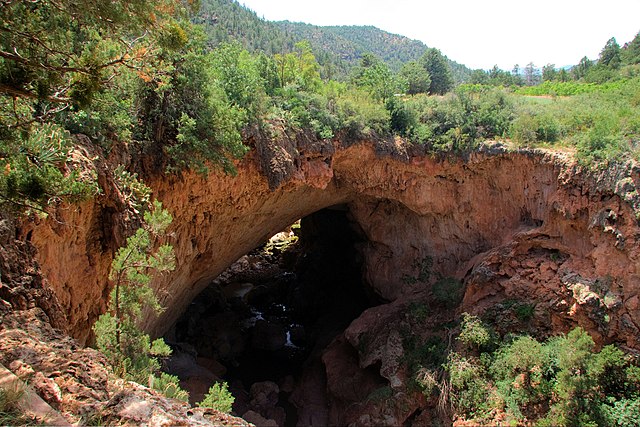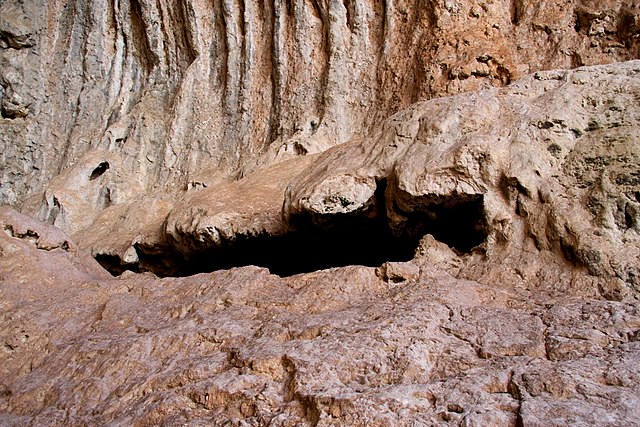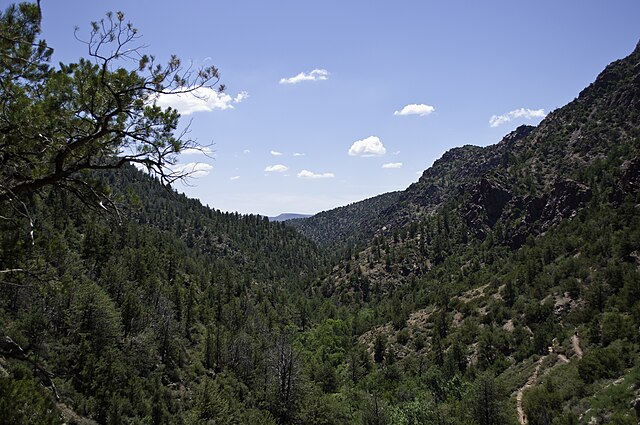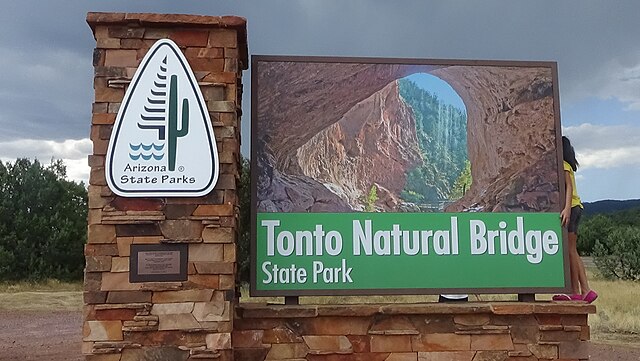Have you ever wondered what it feels like to walk beneath the world’s largest natural travertine bridge? Nestled in the heart of Arizona’s Rim Country, Tonto Natural Bridge State Park offers visitors an extraordinary glimpse into nature’s architectural prowess. This remarkable destination combines stunning geological formations, diverse wildlife, and accessible hiking trails that make it perfect for adventurers of all skill levels.
What Makes Tonto Natural Bridge State Park Special?
Tonto Natural Bridge State Park stands as one of Arizona’s most unique geological treasures, offering visitors an experience unlike anywhere else in the Southwest. This natural wonder showcases the incredible power of water and time working together to create something truly magnificent.
The World’s Largest Natural Travertine Bridge
The star attraction of this park is undoubtedly the massive natural bridge itself. Stretching 183 feet long and standing 150 feet high, this colossal structure formed over thousands of years through the persistent flow of Pine Creek. The bridge spans 400 feet at its widest point, creating a natural tunnel that feels almost otherworldly when you walk through it.
What makes this bridge particularly special is its composition. Unlike many natural bridges carved from sandstone, this formation consists entirely of travertine—a limestone deposit formed by mineral springs. The result is a structure with unique textures, colors, and formations that change dramatically depending on the light and season.
A Brief History of the Park
The area’s human history stretches back centuries, with Apache tribes considering this sacred land long before European settlers arrived. In the 1870s, Scottish immigrant David Gowan discovered the bridge while prospecting for gold. Gowan built a cabin nearby and lived as a hermit for years, eventually filing a homestead claim on the property.
The Gowan family maintained the land for decades, gradually developing it into a tourist destination. In 1990, Arizona State Parks acquired the property, transforming it into the protected state park we know today. This transition ensured that future generations could experience this natural wonder while preserving its delicate ecosystem.
Planning Your Visit to Tonto Natural Bridge State Park

Successful planning can make the difference between a good visit and an unforgettable adventure. Understanding the park’s seasonal patterns, operating hours, and accessibility will help you maximize your experience.
Best Time to Visit
The ideal time to visit Tonto Natural Bridge State Park depends on your preferences and tolerance for crowds. Spring (March through May) offers the most pleasant weather conditions, with comfortable temperatures and occasional wildflower displays. The bridge area remains cool and shaded, making it perfect for hiking and photography.
Summer visits can be challenging due to high temperatures, but the bridge’s natural shade provides relief from the Arizona heat. Early morning or late afternoon visits work best during these months. Fall brings crisp air and stunning foliage, while winter offers solitude and unique photographic opportunities, though some trails may be icy.
Park Hours and Admission Fees
Tonto Natural Bridge State Park typically opens at 8:00 AM and closes at 5:00 PM during winter months, with extended hours until 6:00 PM during summer. The park operates year-round except for Christmas Day, making it accessible for spontaneous adventures.
Admission fees remain reasonable, with adult tickets priced at $7 per person and children under 13 entering free. Annual state park passes offer excellent value for frequent visitors, providing unlimited access to all Arizona State Parks for $75 annually.
Getting There: Location and Directions
Located approximately 10 miles north of Payson on Highway 87, the park sits at an elevation of 4,500 feet in the Tonto National Forest. The drive from Phoenix takes about 90 minutes, while visitors from Flagstaff can reach the park in roughly an hour.
The final approach involves a steep, winding road that descends into Pine Creek Canyon. This 4-mile road requires careful driving, especially during winter months when ice may be present. Large RVs and trailers should exercise caution, as the road includes sharp turns and narrow sections.
Top Activities and Attractions
Tonto Natural Bridge State Park offers diverse activities that cater to different interests and physical abilities. Whether you’re seeking adventure, education, or simply relaxation, the park provides numerous opportunities to connect with nature.
Hiking Trails and Viewpoints
The park features several well-maintained trails that showcase different perspectives of the natural bridge and surrounding landscape. Each trail offers unique challenges and rewards, ensuring that every visitor can find an appropriate adventure.
Pine Creek Trail
The Pine Creek Trail represents the park’s most popular and rewarding hike. This moderate trail descends approximately 500 feet over 0.5 miles, leading visitors directly beneath the natural bridge. The trail includes several switchbacks and stone steps, making it accessible for most fitness levels.
Along the way, hikers encounter diverse plant communities, from desert scrub at the rim to riparian vegetation near the creek. The trail culminates at the bridge’s base, where visitors can walk through the natural tunnel and experience the formation’s true scale. The return hike provides excellent cardiovascular exercise and stunning views of the surrounding canyon.
Gowan Loop Trail
Named after the park’s early homesteader, the Gowan Loop Trail offers a gentler introduction to the area’s natural beauty. This 0.75-mile loop trail remains relatively flat, making it perfect for families with young children or visitors with mobility concerns.
The trail winds through ponderosa pine forest and provides multiple viewpoints overlooking the bridge from above. Interpretive signs along the route explain the area’s geology, ecology, and human history. This trail also connects to the historic Gowan cabin site, offering glimpses into the area’s pioneer past.
Waterfall Trail
The Waterfall Trail leads to a seasonal cascade that flows over travertine formations upstream from the main bridge. This short but steep trail requires careful footing, especially when wet. The waterfall flows most prominently during spring snowmelt and summer monsoon seasons.
This trail offers photographers unique opportunities to capture water flowing over colorful mineral deposits. The intimate scale of this area contrasts beautifully with the massive bridge downstream, providing diverse photographic subjects within a short distance.
Photography Opportunities
Tonto Natural Bridge State Park provides endless opportunities for photography enthusiasts. The bridge’s natural lighting changes throughout the day, creating dramatic contrasts between shadow and sunlight. Early morning and late afternoon offer the most favorable lighting conditions for capturing the bridge’s details and textures.
The park’s diverse ecosystems support numerous photographic subjects beyond the bridge itself. Wildflowers bloom seasonally, while wildlife activities provide action shots. The contrast between the bridge’s warm travertine tones and the surrounding greenery creates compelling compositions.
Wildlife Watching
The park’s varied habitats support an impressive array of wildlife species. Common sightings include javelinas, deer, and numerous bird species. The creek area attracts various animals, particularly during dry periods when water sources become scarce.
Birdwatchers can spot species ranging from canyon wrens to great blue herons. The park’s location along a migration corridor makes it particularly rewarding during spring and fall seasons. Patient observers may also encounter reptiles, small mammals, and diverse insect life.
Visitor Facilities and Amenities

Tonto Natural Bridge State Park provides essential facilities while maintaining its natural character. These amenities enhance visitor comfort without overwhelming the park’s wilderness atmosphere.
Visitor Center and Museum
The park’s visitor center serves as an excellent starting point for any visit. Interactive exhibits explain the bridge’s formation process, local ecology, and human history. Knowledgeable staff members provide trail recommendations, safety information, and answers to visitor questions.
The museum section features artifacts from the Gowan family era, Native American history, and geological specimens. Educational displays help visitors understand the complex processes that created this natural wonder over thousands of years.
Picnic Areas and Restrooms
Several shaded picnic areas provide perfect spots for lunch or rest breaks. These facilities include tables, grills, and nearby restroom access. The main picnic area offers stunning views of the surrounding canyon while maintaining easy access to parking.
Clean restroom facilities are available near the visitor center and at select trailheads. These essential amenities ensure visitor comfort throughout their park experience.
Gift Shop and Educational Programs
The park’s gift shop offers books, postcards, and souvenirs related to Arizona’s natural and cultural history. Proceeds support park operations and educational programs. Items include field guides, local artwork, and practical hiking accessories.
Educational programs vary seasonally and may include guided walks, geology talks, and cultural presentations. These programs provide deeper insights into the park’s significance and help visitors appreciate its unique characteristics.
Safety Tips and Park Rules
Enjoying Tonto Natural Bridge State Park safely requires awareness of potential hazards and respect for park regulations. Following these guidelines ensures a positive experience for all visitors.
Trail Safety Guidelines
The park’s trails present various challenges that require appropriate preparation and caution. The Pine Creek Trail’s descent can be particularly demanding on return trips. Visitors should wear sturdy hiking shoes with good traction, carry adequate water, and inform others of their hiking plans.
Rock surfaces near the bridge can be slippery, especially when wet. Visitors should avoid climbing on unstable formations and respect all posted warning signs. The natural bridge area includes drop-offs and unstable ground that require constant vigilance.
Weather Considerations
Arizona’s weather can change rapidly, particularly at higher elevations. Summer thunderstorms may create flash flood conditions in creek areas. Visitors should monitor weather forecasts and avoid creek areas during storm warnings.
Winter conditions may include ice on trails and roads, requiring extra caution. Appropriate clothing and footwear become essential during colder months. Spring and fall weather generally provide the most stable conditions for hiking.
Nearby Attractions and Day Trip Ideas
Tonto Natural Bridge State Park’s location makes it an excellent base for exploring Arizona’s Rim Country. Numerous attractions within driving distance can extend your adventure and provide diverse experiences.
Payson and Rim Country
The nearby town of Payson offers dining, shopping, and accommodation options for park visitors. This historic community provides insights into Arizona’s ranching and logging heritage through local museums and cultural sites.
Rim Country’s scenic beauty extends far beyond the park boundaries. The Mogollon Rim, world’s longest continuous escarpment, offers spectacular viewpoints and hiking opportunities. These elevated areas provide cooler temperatures and different ecological zones than the bridge area.
Fossil Creek Wilderness
Located approximately 30 minutes from the park, Fossil Creek Wilderness protects one of Arizona’s last free-flowing creeks. This area requires permits for access but rewards visitors with pristine swimming holes and diverse wildlife.
The contrast between Fossil Creek’s flowing water and the park’s travertine formations demonstrates the diverse ways water shapes Arizona’s landscape. Combined visits to both areas provide comprehensive understanding of the region’s geological processes.
Where to Stay Near Tonto Natural Bridge

Accommodation options near the park range from rustic camping to comfortable hotels. Your choice depends on desired amenities, budget, and adventure level.
Camping Options
While Tonto Natural Bridge State Park doesn’t offer camping, several nearby campgrounds provide excellent alternatives. Tonto Creek Campground and Christopher Creek Campground offer forest settings with basic amenities.
Houston Mesa Campground provides more developed facilities, including restrooms and potable water. These campgrounds require reservations during peak seasons and offer excellent access to additional hiking trails and fishing opportunities.
Hotels and Lodges in Payson
Payson offers numerous hotel and lodge options for visitors preferring indoor accommodations. Options range from budget-friendly chains to unique local establishments with southwestern character.
Many accommodations provide packages that include park passes or guided tour options. Booking in advance ensures availability during peak seasons and may provide cost savings. Local bed and breakfasts offer personalized service and insights into area attractions.
What to Bring: Essential Packing List
Proper preparation enhances safety and enjoyment during your park visit. Essential items include sturdy hiking shoes, sun protection, and adequate water supplies. Arizona’s high altitude and intense sun make sunscreen and hats crucial for comfort.
Camera equipment should include extra batteries, as the park’s remote location limits charging opportunities. Binoculars enhance wildlife viewing experiences, while field guides help identify plants and animals. Snacks and lunch allow for extended exploration without rushing back to restaurants.
Weather-appropriate clothing remains essential year-round. Layers work best, as temperatures can vary significantly between shaded bridge areas and exposed trail sections. A small first aid kit and emergency supplies provide security during longer hikes.
Conclusion
Tonto Natural Bridge State Park represents one of Arizona’s most remarkable natural treasures, offering visitors an unforgettable journey into geological wonder. From the awe-inspiring natural bridge itself to the diverse hiking trails and educational opportunities, this park provides something special for every type of adventurer.
Whether you’re seeking a challenging hike beneath the massive travertine bridge, a peaceful picnic with stunning views, or an educational experience about Arizona’s natural history, Tonto Natural Bridge State Park delivers. The park’s combination of accessibility and natural beauty makes it an ideal destination for families, photographers, and nature enthusiasts alike.
Your visit to this remarkable park will create lasting memories while supporting conservation efforts that protect this unique ecosystem for future generations. Plan your adventure today and discover why Tonto Natural Bridge State Park stands as one of Arizona’s most beloved natural destinations.
Frequently Asked Questions
Q: How long does it take to hike to the natural bridge?
A: The Pine Creek Trail to the bridge base takes approximately 20-30 minutes to descend and 30-45 minutes to return, depending on your fitness level and how much time you spend exploring the bridge area.
Q: Is Tonto Natural Bridge State Park suitable for young children?
A: Yes, the park offers family-friendly options including the Gowan Loop Trail, which is relatively flat and easy. However, the Pine Creek Trail requires supervision for young children due to steep sections and potential hazards near the bridge.
Q: Can I swim in Pine Creek?
A: Swimming is not recommended in Pine Creek due to cold water temperatures, swift currents during high flow periods, and safety concerns. The creek is best enjoyed for wading and photography.
Q: Are pets allowed in the park?
A: Pets are welcome in the park but must remain on leashes at all times. Owners are responsible for cleaning up after their pets and ensuring they don’t disturb wildlife or other visitors.
Q: What’s the best time of day to visit for photography?
A: Early morning (8-10 AM) and late afternoon (3-5 PM) provide the most favorable lighting conditions for photography. The bridge’s natural lighting changes throughout the day, creating different moods and opportunities for compelling images.

